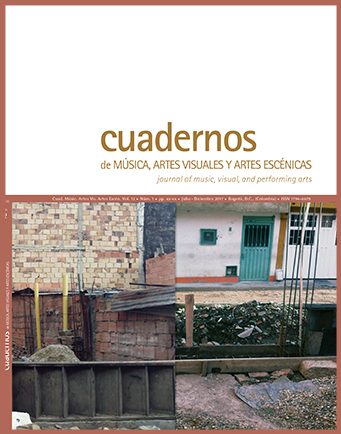Abstract
En este artículo, se hace una indagación sobre las relaciones entre violencia, arte y prácticas simbólicas. Para tal fin, se reflexiona sobre la persistencia del cementerio, las tumbas, los féretros y sus metáforas, tanto en el arte contemporáneo como en los movimientos de familias que buscan a sus desaparecidos. Inseparable de esta persistencia es la imagen de las personas asesinadas y desaparecidas: ¿Cómo enmarcar estos retratos? ¿Cómo dignificar tanto la imagen de estas personas como los ritos funerarios? Los objetos como los féretros no son solo objetos, así como las imágenes de personas desaparecidas no son solo retratos: son imágenes y objetos cuyas circunstancias las arrancan del flujo cotidiano de los acontecimientos, y no es un azar, por tanto, que algunas prácticas artísticas busquen dignificarlas intentando saldar las deudas simbólicas con las personas asesinadas y desaparecidas, así como con sus familias.
This journal is registered under a Creative Commons Attribution 4.0 International Public License. Thus, this work may be reproduced, distributed, and publicly shared in digital format, as long as the names of the authors and Pontificia Universidad Javeriana are acknowledged. Others are allowed to quote, adapt, transform, auto-archive, republish, and create based on this material, for any purpose, provided the authorship is duly acknowledged, a link to the original work is provided, and it is specified if changes have been made. Pontificia Universidad Javeriana does not hold the rights of published works and the authors are solely responsible for the contents of their works; they keep the moral, intellectual, privacy, and publicity rights.
Approving the intervention of the work (review, copy-editing, translation, layout) and the following outreach, are granted through an use license and not through an assignment of rights. This means the journal and Pontificia Universidad Javeriana cannot be held responsible for any ethical malpractice by the authors. As a consequence of the protection granted by the use license, the journal is able to publish retractions or to correct information already published. Publishing contents in this journal does not generate royalties for contributors.


